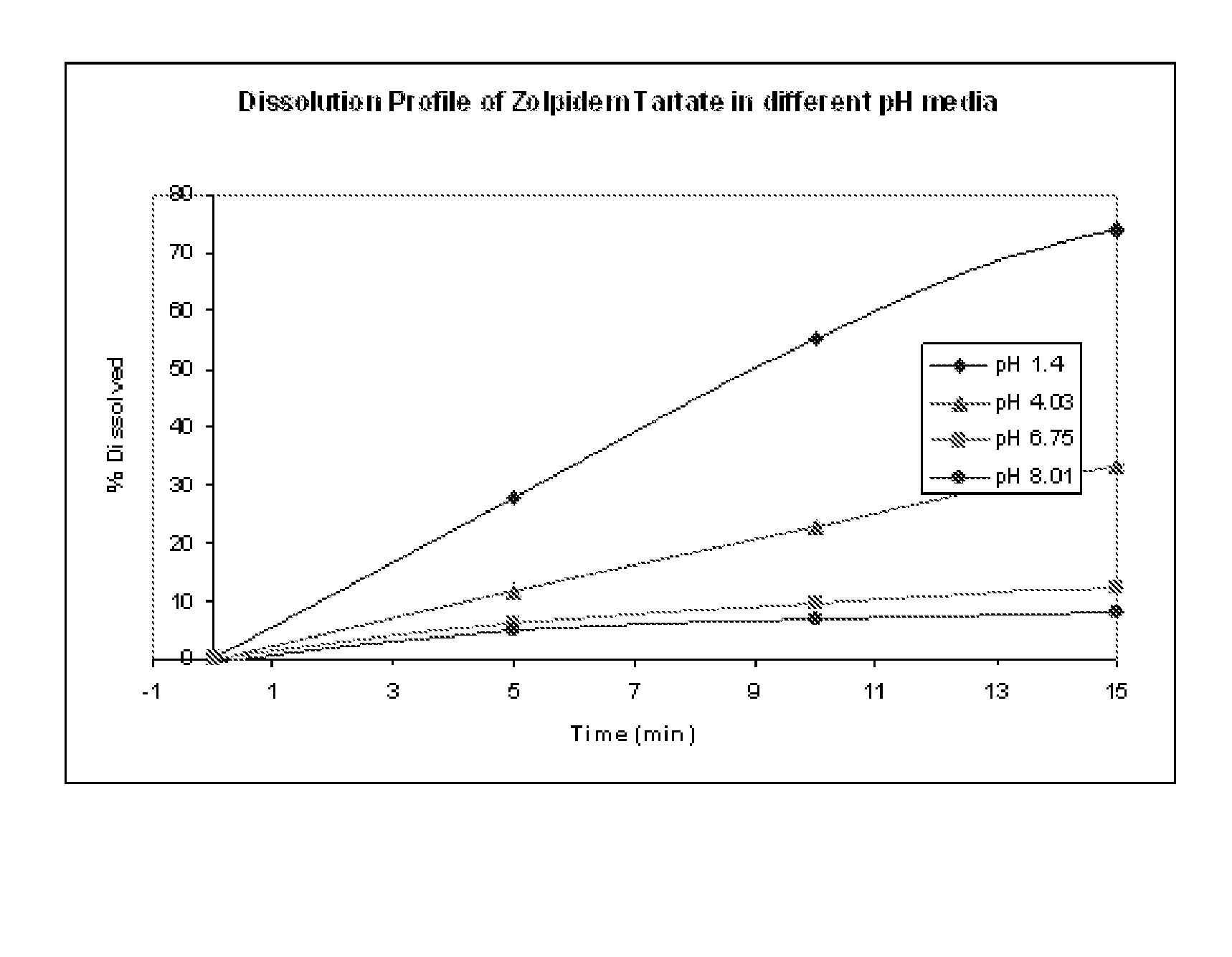Method for manufacturing edible film
a film and film technology, applied in the field of rapid dissolving films, can solve the problems of large medication forms that require additional storage space, many people, and tablets with a tendency to inaccuracy, and achieve the effect of reducing the interaction
- Summary
- Abstract
- Description
- Claims
- Application Information
AI Technical Summary
Benefits of technology
Problems solved by technology
Method used
Image
Examples
example 1
Formation of Film
[0119]Prednisolone sodium phosphate is coated with a 40% by weight coating of Eudragit® L 100-55. The coated particles are suspended in an aqueous slurry of carbonic acid with a pH of 5.0 and stored in a CO2 atmosphere of 0.01 atmospheres. Separately, a polymer solution is made, which includes polyethylene oxide, methylcellulose, flavors, sweeteners and other excipients. The solution and the slurry are pumped using metering pumps through a mixer, where they are mixed for a short period of time, and then sent into a slot die coater and onto a substrate. The result is a wet film coated onto the substrate. The wet film is then dried in an drying oven. The CO2 is lost in the drying oven, which results in a raised pH of the film. The resultant film thus includes the desired level of active and includes a soluble taste-masked coating. The film may then be ingested by an individual.
example 2
Formation of Film
[0120]Prednisolone sodium phosphate is coated with a 40% by weight coating of Methocel 310. The coated particles are suspended in a solution of isopropanol. Separately, a polymer solution is made including PEO, methylcellulose, flavors, sweeteners and other excipients. The suspension and the polymer solution are then pumped using metering pumps through a static mixer, where the suspension and the polymer solution are mixed for a short period of time. The resultant mixture is then fed into a slot die coater and onto a substrate. The result is a wet film coated onto the substrate. The wet film is then dried in a drying oven to effectively remove the isopropanol and produce a self-supporting film product.
example 3
Dissolution of Actives
[0121]Actives may dissolve at different rates depending on the pH of the solution into which the actives are placed. The dissolved actives, once leached from a taste masking medium, will impart a bad taste to the film. As a result, it is desirable to keep the time spend in a lower pH solution at a minimum.
[0122]One active, Zolpidem Tart, was coated with a 40% by weight coating of Eudragit® L 100-55, and placed into various media having pH levels from about 1 to about 8, and the dissolution rate of the active for each solution was measured. The results are set forth in FIG. 1. As can be seen, the lower the pH of the solution, the quicker the dissolution of the active. Further, even in neutral solutions, the active dissolves over a period of time. Thus, it is desirable to limit the time that the active is exposed to a solution, especially that having a low pH value. It would therefore be preferable to mix the taste-masked active in a high or neutral pH solution s...
PUM
 Login to View More
Login to View More Abstract
Description
Claims
Application Information
 Login to View More
Login to View More - R&D
- Intellectual Property
- Life Sciences
- Materials
- Tech Scout
- Unparalleled Data Quality
- Higher Quality Content
- 60% Fewer Hallucinations
Browse by: Latest US Patents, China's latest patents, Technical Efficacy Thesaurus, Application Domain, Technology Topic, Popular Technical Reports.
© 2025 PatSnap. All rights reserved.Legal|Privacy policy|Modern Slavery Act Transparency Statement|Sitemap|About US| Contact US: help@patsnap.com

